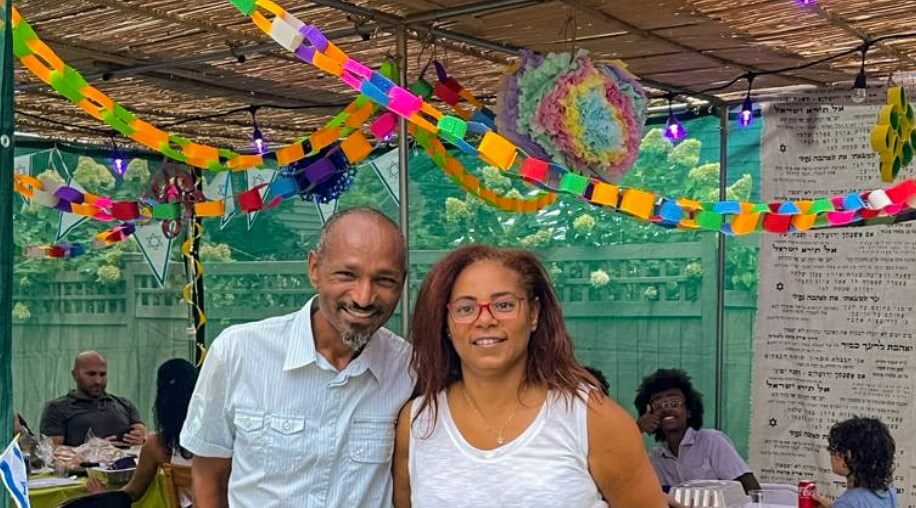Sharing communal sukkot during the ‘Holiday of Shade’
In the Ethiopian celebration, families join together in a community sukkah

In the Ethiopian celebration, families join together in a community sukkah

When we hear about racism or discrimination in Israel, it is usually about Jewish-Arab relations. It is far more rare that we hear the complicated story of Beta Israel, the Ethiopian Jewish community, who also face discrimination in the country. Usually, if we hear anything about their plight, we hear of Israel heroically airlifting thousands…

Thanksgiving is often considered the most American of holidays, perhaps second only to the Fourth of July. Nothing speaks more to American culture and values than celebrating the religious tolerance generations of immigrants sought on U.S. shores, or the creation of a land of plenty, by eating helping after helping of turkey, stuffing and cranberry…

Melissa Fay Greene is the author of “No Biking in the House Without a Helmet.” Her posts are being featured this week on The Arty Semite courtesy of the Jewish Book Council and My Jewish Learning’s Author Blog Series. For more information on the series, please visit: In Addis Ababa, Ethiopia, in November 2001, I…

Courtesy of Ignition Entertainment There remains significant scholarly debate about the exact process and dating of the canonization of the Tanach, but for most Jews, the Book of Enoch ended up on the cutting room floor. Takeyasu Sawaki, a Japanese game designer and the director of the recently released video game “El Shaddai,” would like…

On October 14 at the Osher Marin JCC in San Rafael, California, at a performance for 400 middle school students from six different Bay Area Jewish day schools, the members of the Beta Dance Troupe seemed to defy the laws of human kinetics. Their shoulders pulsed, their heads bobbed and their elbows flapped, while their…
In an effort to prevent female genital cutting, the American Academy of Pediatrics last week released a policy statement endorsing the use of a “ritual nick” on a female baby’s genitals. Doing so, the Academy writes, could “save some girls from undergoing disfiguring and life-threatening procedures in their native country.” The cutting, which is also…




100% of profits support our journalism